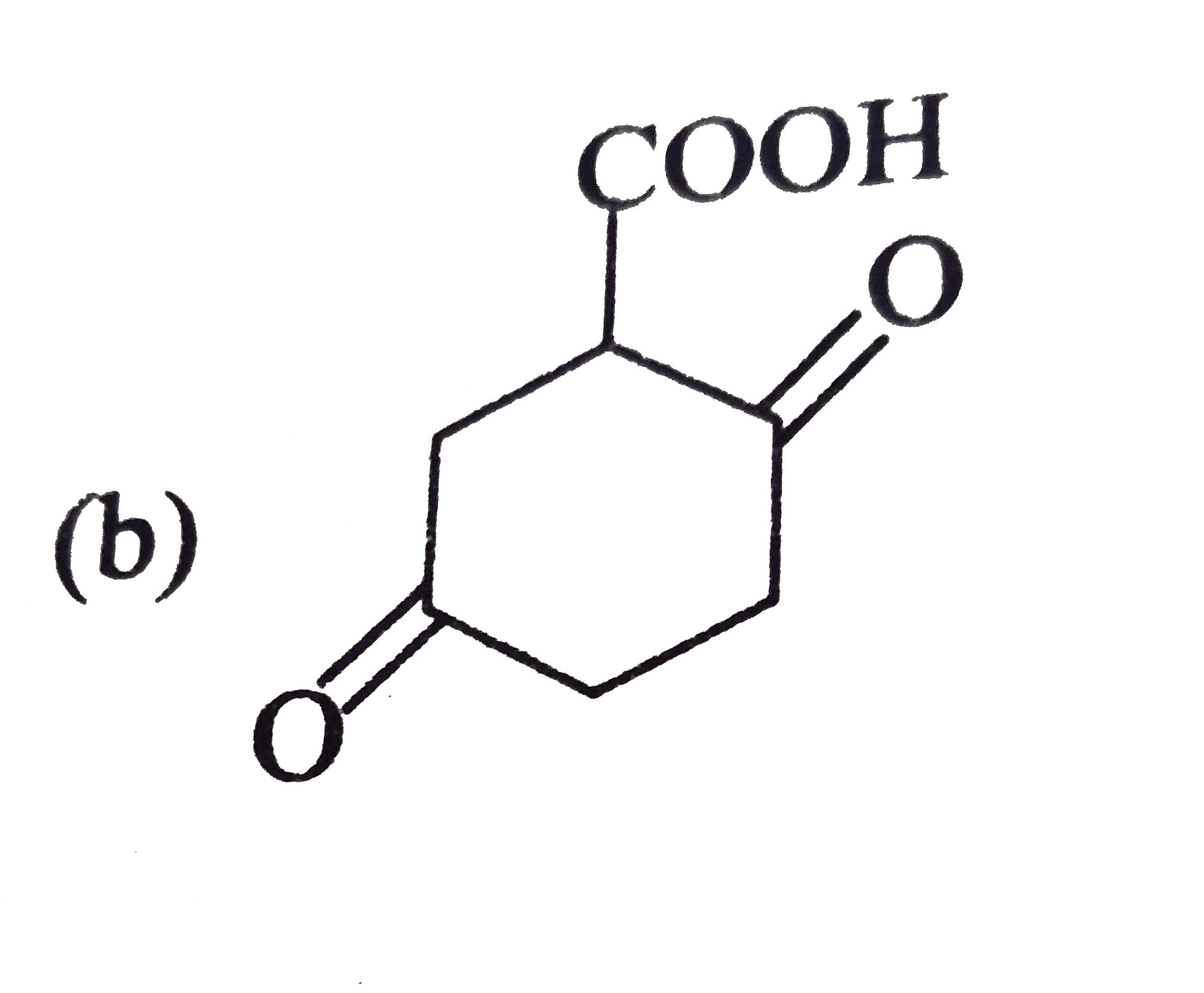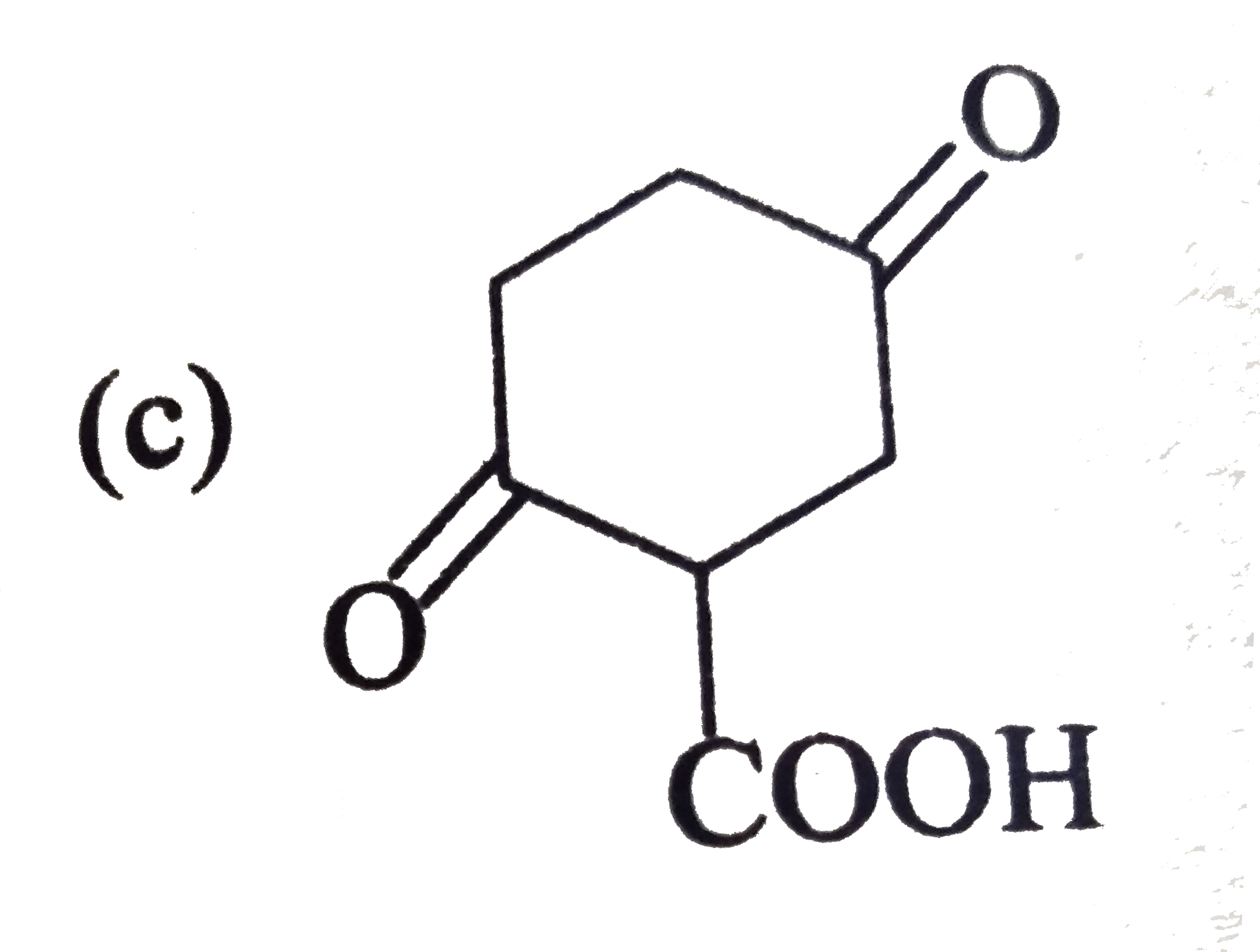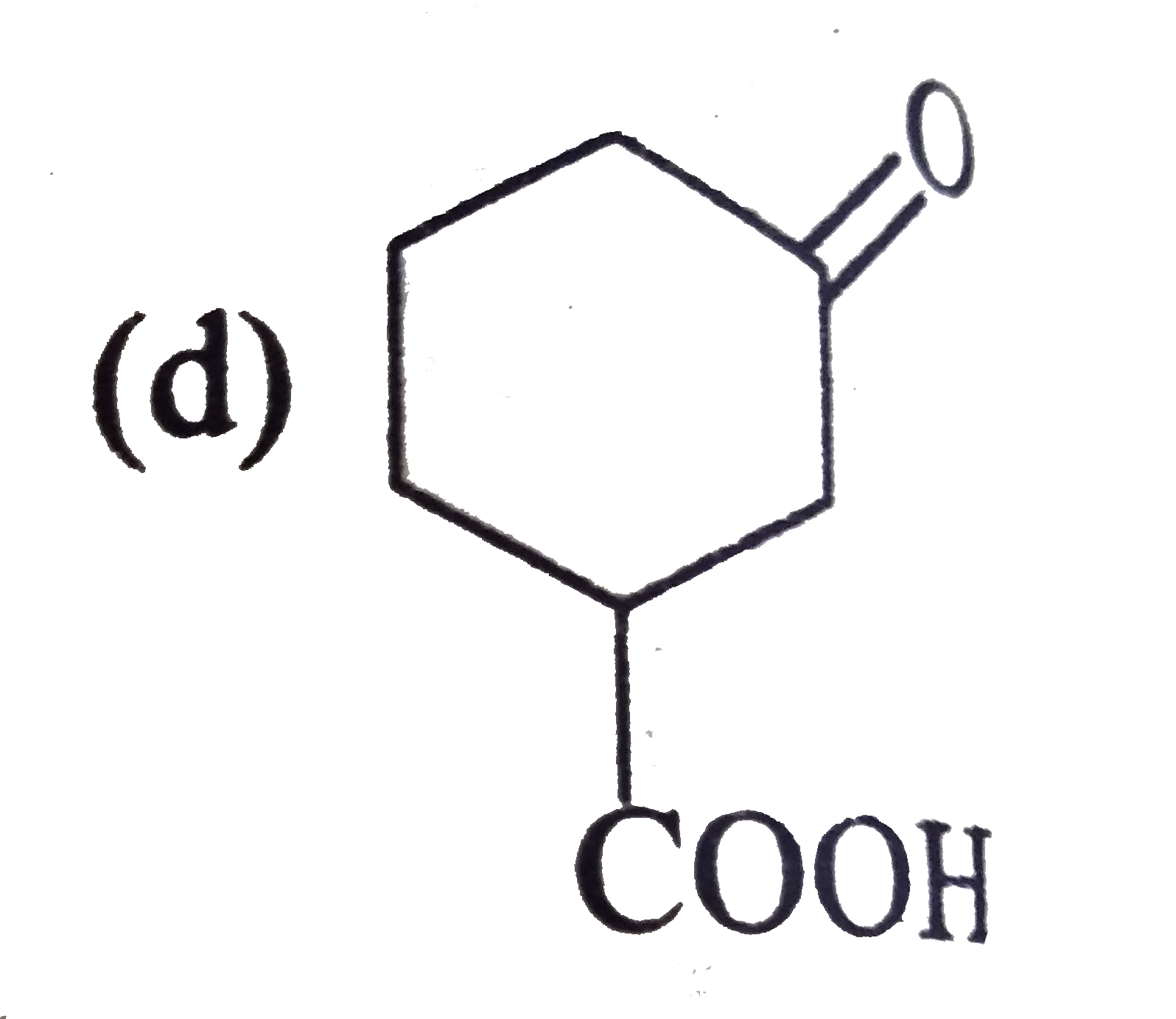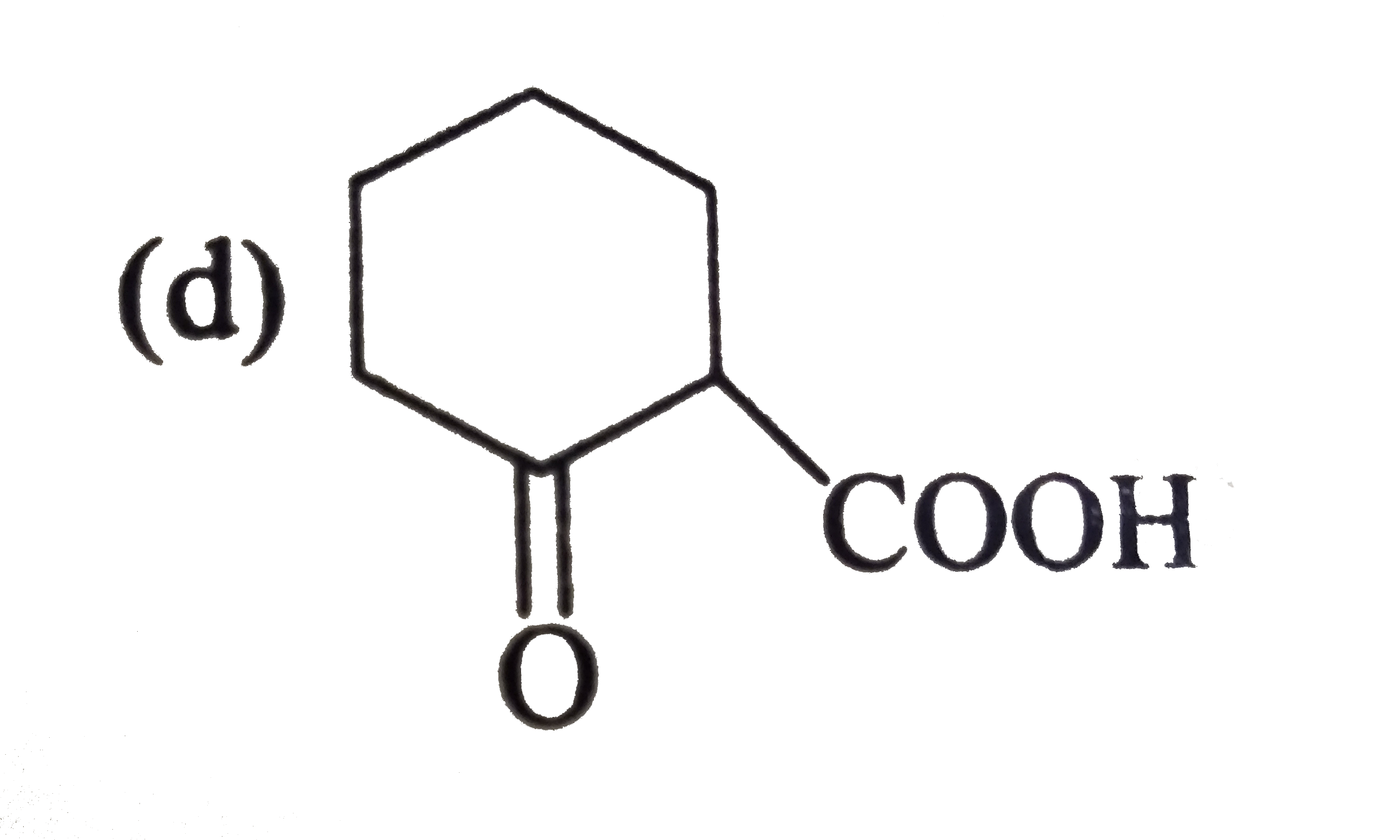Explore topic-wise InterviewSolutions in .
This section includes InterviewSolutions, each offering curated multiple-choice questions to sharpen your knowledge and support exam preparation. Choose a topic below to get started.
| 31101. |
The decomposition ofH_2O_2 can be slowed down by the addition of small amount of phosphoric acid which act as : |
|
Answer» Stopper |
|
| 31102. |
The decomposition of ethers by KI or HBr is called- |
|
Answer» Zerewitinoff's reaction |
|
| 31103. |
The decomposition of dimethyl ether leads to the formation of CH_(4),H_(2) and CO and the reaction rate is given by Rate =k[CH_(3)OCH_(3)]^((3)/(2)) The rate pressure is measured in bar and time in minutes ,then what are the units of rate and rate constants? |
|
Answer» Solution :Where ,PRESSURE is in bar and time is in minute. `therefore` The unit of rate =bar `MIN^(-1)` Rate =`k("Pressure"(CH_(3)OCH_(3))^((3)/(2)))/("Time")` unit of k=`time^(-1)((1)/("pressure"))^(-1)` `min^(-1)((1)/("bar"))^((3)/(2)-1)="bar"^(-(1)/(2)) "min"^(-1)` |
|
| 31104. |
The decomposition of dinitrogen pontoxide(N_2O_5) follows the first order rate law . Calculare the rate constant from the given data : |
|
Answer» Solution :APPLYING the formula, `K=(2.303)/((t_2-t_1))LOG10([A_1])/([A_2])` `=(2.303)/((1600-800))log 10 (1.45)/(0.88)=(2.303)/(800)xx0.2169` `=6.24xx1^(-4)"sec"^(-1)` |
|
| 31105. |
The decomposition of dimethyl ether leads to the formation of CH_(4),H_(2) and CO and the reaction rate is given by Rate =k[P_(CH_(3)OCH_(3))]^(3//2). If the pressure is measured in bar and time in minutes, then what are the units of the rate and rate constants ? |
|
Answer» Solution :In TERMS of PRESSURES, units of RATE `="bar "min^(-1)` Units of `k=("Rate")/([P_(CH_(3)OCH_(3))]^(3//2))("bar min"^(-1))/("bar"^(3//2))="bar"^(-1//2)min^(-1).` |
|
| 31106. |
The decomposition of dimethyl ether leads to the formation of CH_(4), H_(2) and CO and the reaction rate is given by Rate =k[CH_(3)OCH_(3)]^(3//2) The rate of reaction is followed by increase in pressure in a closed vessel, so the rate can also be expressed in terms of the partial pressure of dimethyl ether, i.e., Rate =k(p_(CH_(3)OCH_(3)))^(3//2) If the pressure is measured in bar and time in minutes, then what are the units of rate and rate constants? |
|
Answer» Solution :In TERMS of pressures, units of rate = bar minutes`""^(-1)` Units of `K=("Rate"("bar minutes"^(-1)))/([p_(CH_(3)OCH_(3))]^(3//2)("bar"^(3//2)))="bar"^(-1//2)"minutes"^(-1)`. |
|
| 31107. |
The decomposition of dimethyl ether is a fractional order reaction. The rate of reaction is givenby rate = k (p_(CH_(3)OCH_(3)))^(3//2). If the pressure is measured in bar and time in minutes, then what are the units of rate and constant? |
|
Answer» <P>BAR `"min"^(-1), "bar"^(2) "min"^(-1)` Rate `k = (P_(CH_(3)OCH_(3))^(3//2))` Unit of rate = bar `"min"^(-1)` Unit of rate constant = `("rate")/((p_(CH_(3)OCH_(3))^(3//2))` `= ("bar" "min"^(-1))/("bar"^(3//2)) = "bar"^(-1//2) "min"^(-1)` |
|
| 31108. |
The decomposition of Cl_2O_7 at 500K in the gas phase to Cl_2 and O_2 is a first order reaction . After 1 minutes at 500 K , the pressure of Cl_2O_7 falls from 0.08 to 0.04 atm. Calculate the reate constant in s^(-1). |
|
Answer» Solution :`k = (2.303)/TLOG.([A_0])/([A])impliesk = (2.303)/(1 min)LOG.([0.08])/([0.04])` `k = 2.303log 2 = ? k = 2.303xx0.3010` `k = 0.6932 "min"^(-1)` `k = ((0.6932)/60)s^(-1)impliesk=1.153xx10^(-2)s^(-1)`. |
|
| 31109. |
The decomposition of complex organic compound into simpler compound with the help of enzyme is known as |
|
Answer» CATABOLISM |
|
| 31110. |
The decomposition of Cl_2O_7" at " 400 K in the gas phase to Cl_2 and O_2 is a first order reaction. after 55 seconds at 400K, the pressure of Cl_2 falls from 0.062 atm to 0.044 atm. Calculate the rate constant Calculate the pressure of Cl_2O_7after 100 sec of decomposition at this temperature. |
| Answer» Solution :`6.23 XX 10^(-3) s^(-1) , 0.033` ATM | |
| 31111. |
The decomposition of Cl_(2)O_(7) at 400 K in the gas phase to Cl_(2) and O_(2) is a first orderreaction. (i) After 50 secondsat 400 K, the pressure of Cl_(2)O_(7) falls from 0.062 to 0.044 atm. Calculate the rate constant. (ii) Calculate the pressure of Cl_(2)O_(7) after 100sec of decomposition at this temperature. |
|
Answer» Solution :`apropP_(0)" and "(a-x)propP_(t)."Hence, "k=(2.303)/(t)log""(P_(0))/(P_(t))""(P_(t)=" pressure of "Cl_(2)O_(7)" at TIME t")` (i) `t=50" SEC",P_(0)=0.062" atm",P_(t)=0.044" atm. "k=(2.303)/(50" s")log""(0.062" atm")/(0.044" atm")=6.86xx10^(-3)s^(-1)` (II) `t=100" sec ",P_(t)=?k=6.86xx10^(-3)s^(-1)` `6.86xx10^(-3)s^(-1)=(2.303)/(100s)log""(0.062" atm")/(P_(t))` `log""(0.062)/(P_(t))=0.2979" or "(0.062)/(P_(t))="Antilog"0.2979=1.986" or "P_(t)=0.0312" atm"` |
|
| 31112. |
The decomposition of Cl_2O_7,at 400 K in the gas phase to Cl_2 and O_2 is a first order reaction : Calculate the pressure of Cl_2O_7after 100 s of decomposition at this temperature |
| Answer» SOLUTION :C = 0.033 ATMOSPHERE. | |
| 31113. |
the decomposition of ammonia on tungsten surface at 500K follows zero order kinetics. The Half-life period of this reaction is 45 minutes when the initial pressure is 4 bar. The half-life period (minutes) of the reaction when the initial pressure is 16 bar at the same temperature is |
|
Answer» `120` `t_(1//2)PROPA` (initial concentration of initial pressure) `(t_(1//2)_(1)prop_(1)` `(t_(1//2)_(2)propP_(2)` `((t_(1//2))_(2))/((t_(1//2))_(1))=(P_(2))/(P_(1)),((t_(1//2))_(2))/(45)=(16)/(4)` `(t_(1//2))_(2)=(16)/(4)xx45=180` min |
|
| 31114. |
The decomposition of ammonia on tungsten surface at 500 K follows zero order kinetics . The half-life period of this reaction is 45 minutes when the initial pressure is 4 bar . The half life period (minutes) of the reaction when the initial pressure is 16 bar at the same temperature is |
|
Answer» 120 `t_(1//2) PROP a_(0)` (initial CONCENTRATION or initial pressure ) `(t_(1//2))_(1) prop P_(1)` `(t_(1//2))_(2) prop P_(2)` `((t_(1//2))_(2))/((t_(1//2))_(1)) =(P_(2))/(P_(1)) , (t_(1//2))_(2) = (16)/(4)`. `(t_(1//2))_(2) = (16)/(4) XX 45` = 180 MIN |
|
| 31116. |
The decomposition of ammonia on tungsten surface at 500 K follows zero order kinetics. The half-life period of this reaction is 45 minutes when the initial pressure is 4 bar. Find the half-life period (in minutes) of the reaction when the initial pressure is 16 bar at the same temperature. |
|
Answer» `t_(1//2) PROP a_(0)` (initial concentration or initial pressure) `(t_(1//2))_(1) prop P_(1)` `(t_(1//2))_(2) prop P_(2)` `(t_(1//2))_(2)/(t_(1//2))_(1) = P_(2)/P_(1), (t_(1//2))_(2)/45 = 16/4` `(t_(1//2))_(2) = 16/4 xx 45 = 180` MIN |
|
| 31117. |
The decomposition of ammonia gas on platinum surface has a rate constant k = 2.5 xx10^(-4)"mol L"^(-1)s^(-1) . What is the order of the reaction ? |
|
Answer» FIRST ORDER |
|
| 31118. |
The decomposition of AB_2 to AB and B is first-order with k = 2.8 xx 10^(-7)s^(-1) at 1000^@CAB_2 to AB + BAtomic weights of A and B are 12 and 32 respectively.(i) Find the half-life of this reaction at 1000^@C.(ii) How many days would pass before 1 g of AB_2 had decomposed to theextent that 0.60 g of AB_2remained? (iii) With reference to (ii), how many grams of AB would be present after this length of time?(iv) How much of a 1-g sample of AB_2would remain after 35 days? |
| Answer» SOLUTION :28.58 DAYS, 20.84 days, 0.23 G, 0.43 g | |
| 31119. |
The decomposition of acetaldehyde by I_(2)catalyst is an example of ........... catalysis. |
| Answer» SOLUTION :HOMOGENEOUS | |
| 31120. |
The decomposition of acetaldehyde is a reaction of the order |
|
Answer» 1 |
|
| 31121. |
The decomposition of a substance 'R' takes place according to fl rst order kinetics, Its initial concentration is reduced to 1/8th in 24 s. The rate constant of the reaction si |
|
Answer» `1/24 s^(-1)` `= 1/24 In 2^3= 1/8 In2 s^(-1)` |
|
| 31122. |
The decomposition of A into products has value of k as 4.5xx10^(3)s^(-1) at 10""^(@)C and energy of activation 60" kJ mol"^(-1). At what ttemperature would k be 1.5xx10^(4)s^(-1) ? |
|
Answer» Solution :`k_(1)=4.5xx10^(3)s^(-1),T_(1)=10+273" K"=283" K",k_(2)=1.5xx10^(4)s^(-1),T_(2)=?,E_(a)=60" kJ mol"^(-1)` APPLYING Arrhenius equation, `log""(k_(2))/(k_(1))=(E_(a))/(2.303" R")((T_(2)-T_(1))/(T_(1)T_(2)))` `log""(1.5xx10^(4))/(4.5xx10^(3))=(60000" J mol"^(-1))/(2.303xx8.314" JK"^(-1)" mol"^(1))((T_(2)-283)/(283T_(2)))` or `log3.333=3133.63((T_(2)-283)/(283t_(2)))" or "(0.5228)/(3133.63)=(T_(2)-283)/(283T_(2))" or "0.0472T_(2)=T_(2)-283` or `0.9528T_(2)=283" or "T_(2)=(283)/(0.9528)=297" K"=297-273""^(@)C=24""^(@)C.` |
|
| 31123. |
The decomposition of A into product has value of k as as 4.5 xx10^3s^(-1)" at "10^@C and energy of activation 60"kJ mol"^(-1). At what temperature would k be 1.5xx10^4s^(-1) ? |
|
Answer» SOLUTION :`k_1=4.5xx10^3s^(-1)` `T_1 = 10 + 273 K = 283 K` `k_2=1.5x10^4s^(-1)` `T_2=? , E_a=60" kJ MOL"^(-1)` According to Arrhenius equation, `LOG.k_2/k_1=E_a/(2.303R)[(T_2-T_1)/(T_1T_2)]` or `log.(1.5xx10^4)/(4.5xx10^(3))=(60000"Jmol"^(-1))/(2.303xx8.314"JK"^(-1) mol^(-1))xx[(T_2-283)/(283T_2)]` or , `log3.3333333=3133.63[(T_2-283)/(283T_2)]` or `0.0472T_2=T_2-283` or `0.9528T_2=283` or `T_2=283/90.9528=297K=(297-273^@C)=24^@C` |
|
| 31124. |
The decomposition of A into products has a value of k as 4.5 xx 10^(3) s^(-1) at 10^(@)C and energy of activation 60 kJ mol^(-1). At what temperature would k be 1.5 xx 10^(-4) s^(-1) ? |
|
Answer» Solution :Given, `T_(1) = 10^(@)C + 273 = 283 K` `k_(T_(1)) = 4.5 xx 10^(3) sec^(-1)` `E_(a) = 60 KJ mol^(-1) =6 xx 10^(3) J mol^(-1)` `T_(2) = ?` `k_(T_(2)) = 1.5 xx 10^(4) sec^(-1)` We know that `log.(k_(T_(1))/(k_(T_(1)))) = (E_(a))/(2.303 R)[(T_(2)-T_(1))/(T_(1) xx T_(2))]` On putting values `log.(1.5 xx 10^(4))/(4.5 xx 10^(3)) = (60 xx 10^(3) J mol^(-1))/(2.303 xx 8.314)((T_(2)- 283)/(283 T_(2)))` `0.523 = 3133.63((T_(2)-283)/(283 T_(2)))` `(T_(2) - 283)/(283 T_(2)) = 1.67 xx 10^(-4)` `T_(2) - 283 = 0.0472 T_(2)` `0.953 T_(2) = 283` `T_(2) = 297 K` `T_(2) = 24^(@) C` |
|
| 31125. |
The decomposition of A into product has value of k as 4.5xx10^(3)s^(-1) at 10 ""^(@)C and energyof activation 60 kJ "mol"^(-1). At what temperature would k be 1.5xx10^(4)s^(-1)? |
|
Answer» Solution :`k_(1)=4.5xx10^(3)s^(-1), T_(1)=10+273K=283K, k_(2)=1.5xx10^(4)s^(-1), T_(2)=?, E_(a)=60"kJ MOL"^(-1)` Applying Arrhenius equation and substituting the values, we get `"log"(k_(2))/(k_(1))=(E_(a))/(2.303R)((T_(2)-T_(1))/(T_(1)T_(2)))` or `"log"(1.5xx10^(4))/(4.5xx10^(3))=(E_(a))/(RT)= -(60000"J mol"^(-1))/(2.303xx8.314JK^(-1)"mol"^(-1))((T_(2)-283)/(283T_(2)))` or`log 3.333=3133.63 ((T_(2)-283)/(283T_(2))) or (0.5228)/(3133.63)=(T_(2)-283)/(283T_(2))` or `0.0472T_(2)=T_(2)-283 or 0.9528T_(2)=283` or `T_(2)=(283)/(0.9528)=297K=(297-273)""^(@)C=24""^(@)C`. |
|
| 31126. |
The decomposition of A into product has value of k as 4.5xx10^(3) s^(-1) at 10^(@)C and energy of activation 60 KJ mol^(-1) .at what temperature would k be 1.5xx10^(4)s^(-1)? |
|
Answer» Solution :REACTION A `to` Product `T_(1)=10^(@)C=10+273=283 K` and `K_(1)=4.5xx10^(3)s^(-1)` `E_(a)=60 KJ mol^(-1)=60000J mol^(-1)` If `K_(2)=1.5xx104 s^(-1)` so temperature `T_(2)`=(?) The ARRHENIUS equation is as under. log `(K_(1))/(K_(2))=(E_(a))/(2.303)((T_(2)-T_(1))/(T_(1)T_(2)))` `therefore ((1.5xx10^(4))/(4.5xx10^(3)))=(60000 J mol^(-1))/(2.303xx(8.314 JK^(-1) mol^(-1)))((T_(2)-283)/(T_(2)xx283))` `therefore log 0.5228=(6000K)/(2.303xx8.314)((T_(2)-283)/(283 T_(2)))` `therefore (T_(2)-283)/(T_(2))=(0.5228xx2.303xx8.314xx283)/(60000)` `therefore T_(2)-283=(0.0472)T_(2)` `therefore (T_(2)-0.0472 T_(2))=283` `therefore 0.9528 T_(2)=283` `therefore T_(2)=(283)/(0.9528)=297.02 K=24.02^(@)`C |
|
| 31127. |
The decomposition of a compound P, at temperature T according to the equation 2P_((g)) rarr 4Q_((g)) +R_((g)) +S_((l))is the first order reaction. After 30 minutres from the start of decomposition in a closed vessel, the total pressure developed is found to be 317 mm Hg and after a long period of time the total pressure observed to be 617 mm Hg. Calculate the total pressure of the vessel after 75 mintute, if volume of liquid S is supposed to be negligible. Also calculate the time fraction t_(7//8). Given : Vapour pressure of S(l) at temperature T = 32.5 mm Hg |
|
Answer» <P> SOLUTION :`p_(t)=379.55" MIN HG, "t_(7//8)=399.96` min |
|
| 31128. |
The decomposition of a compound is found to follow a first order rate law. If it takes 15 minutes for 20 percent of original material to react, calculate (i) specific rate constant (ii) the time at which 10 percent of the original material remains unreacted, (iii) the time it takes for the next 20 percent of the reactant left to react after the first 15 minutes. |
|
Answer» (ii) `t=(2.303)/(k)log""(a)/(0.10a)=(2.303)/(0.01488)log10=154.77" min".` (iii) In first 15 minutes, `20%` has reacted. `:.` AMOUNT LEFT unreacted `=80%` of `a=0.80` a This is now initial CONCENTRATION. For next `20%` of this amount to react means `x=20%` of `0.80a=0.16a` `:.""t=(2.303)/(k)log""(0.80a)/(0.80a-0.16a)=(2.303)/(0.01488" min"^(-1))log""(0.80)/(0.64)` `=154.77" min "xxlog1.25=154.77xx0.0969" min "=15 "minutes"` |
|
| 31129. |
The decomposition of A into product has value of K as 4.5 xx 10^(3) sec^(-1) at 10^@ C and energy of activation 60 kJ/mol. At what temperature would K be 1.5 xx 10^(4) "sec"^(-1). |
| Answer» SOLUTION :`24^@` C | |
| 31130. |
The decomposition of a hydrocarbon follows the equation k=(4.5xx10^(11)s^(-1))e^(-28000" K"//"T") Calculate E_(a). |
|
Answer» SOLUTION :According to Arrhenius EQUATION, `k="A E"^(-E_(a)//"RT")` `:.-(E_(a))/(RT)=-(28000" K")/(T)" or "E_(a)=28000" K"XX" R"=28000" K"xx8.314" JK"^(-1)" mol"^(-1)=232.79" kJ mol"^(-1).` |
|
| 31131. |
The decomposition of a certain mass of CaCO_(3) gave 11.2dm^(3) of CO_(2) gas at STP. The mass of KOH required to completely neutralize the gas is |
|
Answer» 56 g 22.4 `dm^(3)` of `CO_(2)` at STP required KOH = 112 g `THEREFORE 11.2dm^(3)` of `CO_(2)` at sTP will required KOH = 56 g |
|
| 31132. |
The decomposition of a certain mass of CaCO_(3) gave 11.2 dm^(3) of CO_(2) gas at STP. The mass of KOH required to completely neutralise the gas is: |
|
Answer» 56g `KOH+CO_(2)rarrKHCO_(3)` `(1)/(2)` mole `CO_(2)` will be neutralised by `(1)/(2)` mole KOH,i.e.,28g KOH |
|
| 31133. |
The decomposition of a certain mass of CaCO_(3) gave 11.2 dm^(3) of a CO_(2) at S.T.P. The mass of KOH required to completely neutralize the gas is |
|
Answer» `56 g` `22.4 DM^(3)` of `CO_(2)` at N.T.P. required KOH = 112 g `11.2 dm^(3)` of `CO_(2)` at S.T.P. will require KOH = 56 g |
|
| 31134. |
The decomposition of a certain mass of CaCO_(3) gave 11.2 dm^(3) of CO_(2) gas at STP. The mass of KOH required to completely neutralise the gas is |
|
Answer» 56 g `44//2=22g` `underset(56 g)(KOH)+underset(44 g)(CO_(2))to KHCO_(3)` KOH REQUIRED for complete NEUTRALISATION of 22 g `CO_(2)` is `(56)/(44)xx22=28 g`. |
|
| 31135. |
The decay of a radioactive element follows first order kinetics, as a result |
|
Answer» Half-life period = constant/k, where k is the decay constant |
|
| 31136. |
The decimal equivalent of 2/5 may be written upto four significant figures as : |
|
Answer» 0.4 |
|
| 31137. |
The decay constant of radioactive substance is 0.173 ("years")^(-1) . Therefore |
|
Answer» One sixth of the RADIOACTIVE substance will be left after 8 years |
|
| 31138. |
The decay constant of a radioactive element is 3 xx 10^(-6) "min"^(-1). Its half-life is |
|
Answer» `2.31 XX 10^(5)` min |
|
| 31139. |
The decay constant of Ra^(226) " is " 1.37 xx 10^(-1)) s^(-1). A sample of Ra^(226) having an activity of 1.5 millicurie will contain.... atoms |
|
Answer» `4.1 XX 10^(18)` 1.5 milli curie `= 5.55 xx 10^(7) dps` `(5.55 xx 10^(7))/(N_(0)) = lamda = 1.37 xx 10^(-11)` |
|
| 31140. |
The decay constant of a radioactive sample is 'lamda'. The half-life and mean life of the sample are respectively |
|
Answer» `(1)/(lamda), (LN 2)/(lamda)` |
|
| 31141. |
The decay constant of _88^226 Ra is 1.37 times 10^-11 sec^-1. A sample of _88^226 Ra having an activity of 1.5 millicurie will contain ….atoms. The blank can be correctly filled by, |
|
Answer» `4.05 TIMES 10^18` |
|
| 31142. |
The decarboxylation of beta - ketoacids, beta, gamma - unsaturated acid and geminal diacid proceed through the formation of cyclic transition state in presence of heat. CH_(3)-overset(O)overset("||")C-CH_(2)-overset(O)overset("||")C-OHoverset(Delta)rarrCH_(3)-overset(O)overset("||")C-CH_(3) Mechanism: Find the correct product of following reaction: H_(3)C-CH=CH-CD_(2)-overset(O)overset("||")C-OHoverset(Delta)rarr |
|
Answer» `H_(3)C-CH_(2)-CH=CD_(2)` |
|
| 31143. |
The decasing nucleophilic order of the following compounds is: i. H_(2)O, ii. H_(2)S, iii. H_(2)Se, iv. H_(2)Te |
|
Answer» `(i) GT (ii) gt (iii) gt (iv)` Nuclophillcity: `H_(2)OTE gt H_(2)Se gt H_(2)S gt H_(2)Te` |
|
| 31144. |
The decarboxylation of beta - ketoacids, beta, gamma - unsaturated acid and geminal diacid proceed through the formation of cyclic transition state in presence of heat. CH_(3)-overset(O)overset("||")C-CH_(2)-overset(O)overset("||")C-OHoverset(Delta)rarrCH_(3)-overset(O)overset("||")C-CH_(3) Mechanism: Find the product of following reaction : |
|
Answer»
|
|
| 31145. |
The decarboxylation of beta - ketoacids, beta, gamma - unsaturated acid and geminal diacid proceed through the formation of cyclic transition state in presence of heat. CH_(3)-overset(O)overset("||")C-CH_(2)-overset(O)overset("||")C-OHoverset(Delta)rarrCH_(3)-overset(O)overset("||")C-CH_(3) Mechanism: |
|
Answer»
|
|
| 31146. |
The decarising basic order of the following is: i. F_(3)CSO_(3)^(o-), ii. Cl_(3)C-COO^(o-) iii. PhSO_(3)^(o-), iv. MeSO_(3)^(o-) |
|
Answer» `(i) gt (ii) gt (III) gt (iv)` i. Sulphonic acids are stronger than carboxylic acids. ii. Aromatic sulphonic acids are stronger than alipatic sulphonic acids. iii. More the number of number of `EWG` stronger is the acid. Acidic: `F_(3) CSO_(3)H gt PhSO_*3)H gt MeSO_(3)^(o-) lt MeSO_(3)H gt Cl_(3)CCOOH` Basic: `F_(3)CSO_(3)^(o-) lt PhSO_(3)^(o-) lt MeSI_(3)^(o-) lt Cl_(3)CCO overset(o-)(O)` |
|
| 31147. |
Namethe decarboxylatingagent . |
|
Answer» SODA lime |
|
| 31148. |
The decahydrate form of sodium carbonate i.e. washing soda on starding in air effloresces and crumbles to powder.The number of water molecule(s) present in the compound formed is: |
|
Answer» |
|
| 31149. |
The deBroglie wavelength of an electron travelling at 1% of the speed of light is(h=6.6xx10^(-4)Js, mass of electron =9.0xx10^(-31)kg |
|
Answer» `24.4xx10^(-10)m` |
|
| 31150. |
The de Broglie wavelength of a tennis ball of mass 60 g moving with a velocity of 10ms^(-1) is approximately (h=6.6xx10^(-34)Js) |
|
Answer» `10^(-31)m` |
|







